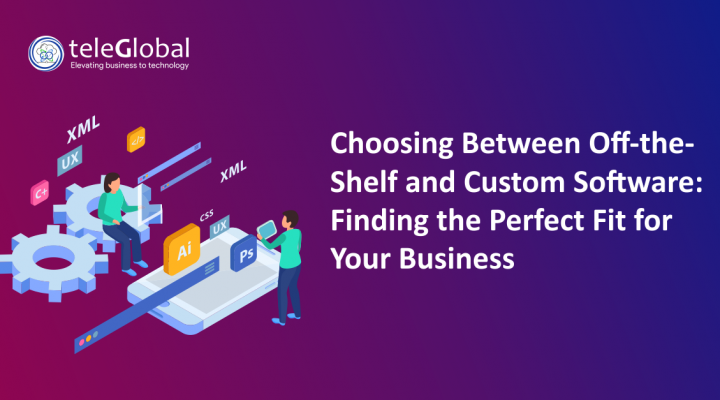
| Author: Ashish Kumar | Published: 26-Dec-2023 |
Every business needs software to run smoothly and grow. Some buy off the shelf tools. Others choose custom software development. Picking the right one matters because it shapes cost, speed, security, and long-term growth.
Off the shelf tools are quick and cheaper upfront but may not fit every need. Custom software development solutions are built around business goals and can scale with time. The choice depends on budget, team size, and how unique the needs are.
Off the shelf software is ready-made. You buy it and start using it at once.
These tools are built for general use. Examples include project trackers, billing apps, or CRMs. They are simple to set up and often cheap to start.
Most vendors include support, updates, and guides. You do not wait months for delivery. For common needs, this works well.
But limits appear. You may not use many features. Some tasks need workarounds. And as your business grows, you may feel trapped in licenses or upgrades.
Custom software development solutions are designed for one company. They match your exact process and rules.
You choose the design, the features, and the scale. You own the system. No unused extras, no forced updates.
Bespoke software development service is not only for big firms. Many choose custom software development for small business to reduce waste. Startups also prefer custom software development for startups to grow faster.
This path works when your needs are simple. If you only need payroll or basic invoicing, off the shelf is enough.
Custom mobile application development also allows staff to work on the move. That is key for field teams and service staff.
Off the shelf is cheaper at first. Subscriptions and licenses look light on the budget. But the cost rises each year. Add-ons and extra users increase the bill. Integration with other tools often costs more.
Custom software development solutions cost more upfront. You pay for planning, coding, and testing. But you avoid recurring license fees. Updates follow your rules, not vendor plans. Long-term, custom can save money.
It is like renting versus owning. Renting is cheaper today but limits control. Owning takes more money at first but pays off with freedom.
For example, a local shop may use standard accounting software. It covers invoices, payroll, and tax filing at low cost.
Custom software development for startups helps firms avoid slowing down as they grow. Tailored tools adjust as users and data increase.
Custom software development for small business avoids waste. Owners do not pay for features they never use.
Hiring full teams in-house is costly. Many firms use custom offshore software development services.
This model offers skilled talent at lower cost. You get faster delivery without long hiring cycles. Offshore teams build systems for startups, small firms, and large enterprises.
Off the shelf works when you want something fast and cheap. But you lose control and flexibility over time.
Custom software development solutions give you tools built for your business. Whether it is custom mobile application development, bespoke software development service, or custom offshore software development services, the right partner delivers value.
We at TeleGlobal help firms choose and build software that matches their size, their goals, and their future growth. From custom software development for startups to enterprise platforms, we create systems that work the way you do.
It means building software designed for one business instead of many.
Services that cover planning, coding, testing, and support for tailored systems.
Remote teams that deliver custom apps at lower cost.
Yes. It cuts waste and supports growth without paying for unused tools.
Check their past work, reviews, and process. Pick a partner who understands your needs.
It is building mobile apps for your staff or customers with your features.
It is software built only for your business, with no extra or missing features.
Yes. Startups often need flexible systems that scale quickly.
 close
close

Hi there! At TeleGlobal, we turn your cloud vision into AI-accelerated reality. What challenge can we help you solve?
Powered by ![]() teleBot
teleBot